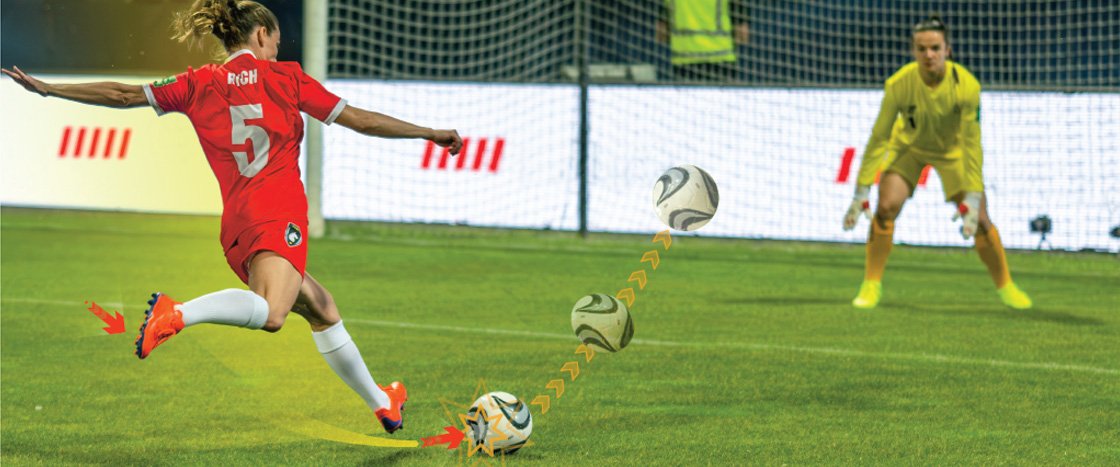In soccer, teams of 11 players compete to get the ball into their opponents’ net. Except for the goalie, who guards their team’s goal, players can’t use their hands. The main way players move the ball is by kicking it with their feet. They kick the ball differently if they’re running with the ball, passing it, or shooting it.
For most kicks, players strike the ball with the inside of their foot rather than with their toe. Using this larger surface gives players more control over the direction the ball moves. Players can also control how much energy they move to the ball. They can softly tap the ball or send it speeding off their foot to their teammate—or straight into the goal!

